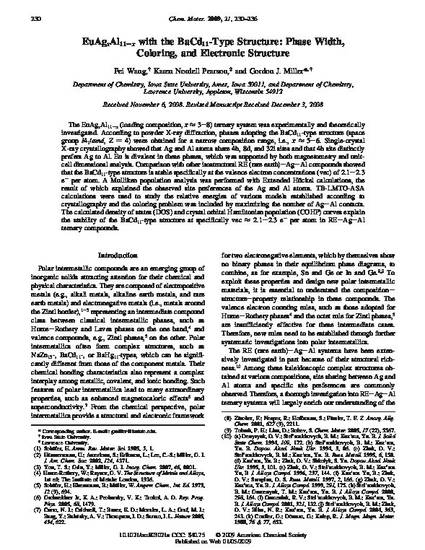
The EuAgxAl11−x (loading composition, x ≈ 3−8) ternary system was experimentally and theoretically investigated. According to powder X-ray diffraction, phases adopting the BaCd11-type structure (space group I41/amd, Z = 4) were obtained for a narrow composition range, i.e., x ≈ 5−6. Single-crystal X-ray crystallography showed that Ag and Al atoms share 4b, 8d, and 32i sites and that 4b site distinctly prefers Ag to Al. Eu is divalent in these phases, which was supported by both magnetometry and unit-cell dimensional analysis. Comparison with other isostructural RE (rare earth)−Ag−Al compounds showed that the BaCd11-type structure is stable specifically at the valence electron concentrations (vec) of 2.1−2.3 e− per atom. A Mulliken population analysis was performed with Extended Hückel calculations, the result of which explained the observed site preferences of the Ag and Al atoms. TB-LMTO-ASA calculations were used to study the relative energies of various models established according to crystallography and the coloring problem was included by maximizing the number of Ag−Al contacts. The calculated density of states (DOS) and crystal orbital Hamiltonian population (COHP) curves explain the stability of the BaCd11-type structure at specifically vec ≈ 2.1−2.3 e− per atom in RE−Ag−Al ternary compounds.
Available at: http://works.bepress.com/gordon-miller/39/

Reprinted (adapted) with permission from Chem. Mater., 2009, 21 (2), pp 230–236. Copyright 2009 American Chemical Society.